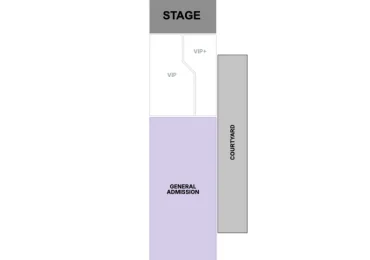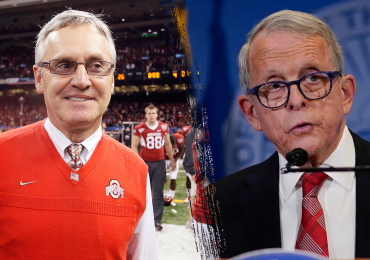Aspects of Sunday’s United States Grand Prix were tough to call in the heat of the moment, as multiple incidents up and down the field created the potential for debate.
Turn 12 in particular is a key overtaking spot but the great layout at Circuit of The Americas means there are plenty of chances to continue a fight through the next couple of corners, so it’s not always a case of a driver wanting to cede the high ground knowing there’s no chance of responding for a whole lap.
The first incident that caught my eye at the weekend was in the Sprint, when Oscar Piastri pulled off what looked like an excellent overtaking maneuver on Pierre Gasly, only to be hit with a five-second time penalty for forcing another driver off the track.
Piastri braked later, got down the inside, and made the corner, so it felt like a legitimate move. But the Australian himself admitted a penalty was probably deserved as he forced Gasly to get out of his way.
In my mind, that’s what an overtaking move should be. The car doing the overtaking will complete the move because they gain the high ground and leave their rival no choice but to slot in behind. If that rival opts to defend so hard that they run out of road at a corner they know they have run-off in, so be it.
But Piastri’s opinion is far more valid than mine, even if the Ferrari drivers seemed to disagree with the penalty he received. So it got me thinking more about the rules themselves, because once the dust had settled on the weekend and you could take your time to analyze each move, there was actually little that the stewards got wrong.
As handy as it would be to be able to see the “Driving Standards Guidelines” that are often referenced when incidents happen, a lot of the focus appeared to be centered on the wrong thing.
Those rules essentially give full priority to the car ahead at the apex of a corner, regardless of how they got there. I’d say it’s impossible to come up with every single scenario so simplicity has required a defining factor to be settled on, and it’s the car ahead at the apex.
Where Max Verstappen has been so smart with his approach to racing is that he simply looks at what the rules say and how moves should therefore be policed, and drives accordingly. At Turn 1, he was the aggressor and both cars ended up off-track (pictured, top), but by getting to the apex first he had priority.
At Turn 12 later on, he was defending and had dropped behind Lando Norris as the braking zone approached, but by modulating his braking to make sure he got to the apex first, he again is the one who can ensure he leaves the corner ahead.
 The pictures tell the story…or do they? Sam Bagnall/Motorsport Images
The pictures tell the story…or do they? Sam Bagnall/Motorsport Images
Do I agree with being able to almost completely disregard the approach to the corner simply to be the first car to the apex? No, but right now as it stands that is essentially the first battle that a driver has to win, and Verstappen did it on both occasions.
Television coverage is designed to be dynamic and rarely gives the exact same perspective of each battle, nor does it provide a guaranteed static shot at the moment the cars reach the apex of each corner, so it’s easy to have an impression of a move on first viewing that is actually different based on the rules from another angle.
Norris looked entitled to racing room on the outside of Turn 12 during the fight with Verstappen as it happened live, but replays showed it was the Red Bull ahead at the apex, leading to the penalty for the McLaren driver. With so many similar incidents coming down to the relevant positions of each car at the same exact point, it’s easy to see how questions about consistency arise.
But those are questions that can be avoided on occasion. I’ve written in the past of how referring decisions are never going to keep everyone happy all of the time. It doesn’t matter whether you’re a fan, driver, team boss or journalist, there are going to be times that you have differing opinions.
I once attended an FIA seminar in Geneva that involved a section of the program that put you in the shoes of the stewards. You learned some of the guidelines they have, what they are asked to decide on, and even details down to how they are meant to write out decisions. But across different members of the FIA, there were wildly different viewpoints on the incidents we were shown.
That’s natural, and should not be overly criticized. But to avoid it being a controversial aspect of the sport as often as possible, then permanent stewards should be a target.
There is a pool of qualified stewards that the FIA picks from, so it’s not like the current system leads to enormous levels of rotation and random groupings of stewards, but you’re still going to get differences in how very similar situations are handled. That can be influenced by what is spoken about in the driver briefing, especially if there’s a specific hot topic of the time.
It would also be helpful to overhaul the way decisions are announced. Having referees that explain their working is a call that is made in many different sports, and in F1 we’re lucky in some senses that you do get official documents that state why a penalty was handed out.
But in the case of COTA and Turn 12, you could quite easily present stills of both onboard and wide-angle shots as supporting evidence, so that it’s easy to compare why one driver might be penalized for forcing another off track, when a very similar incident received a different punishment. Small differences are more clearly seen when juxtaposed.
The best drivers in the world will race to the rules they are given, and the FIA can help itself by making those rules more clear to everyone watching, and doing the same when explaining how they are imposed.
As they are currently written, the big decisions were handled correctly in Austin. But perhaps the rules themselves need refining.









